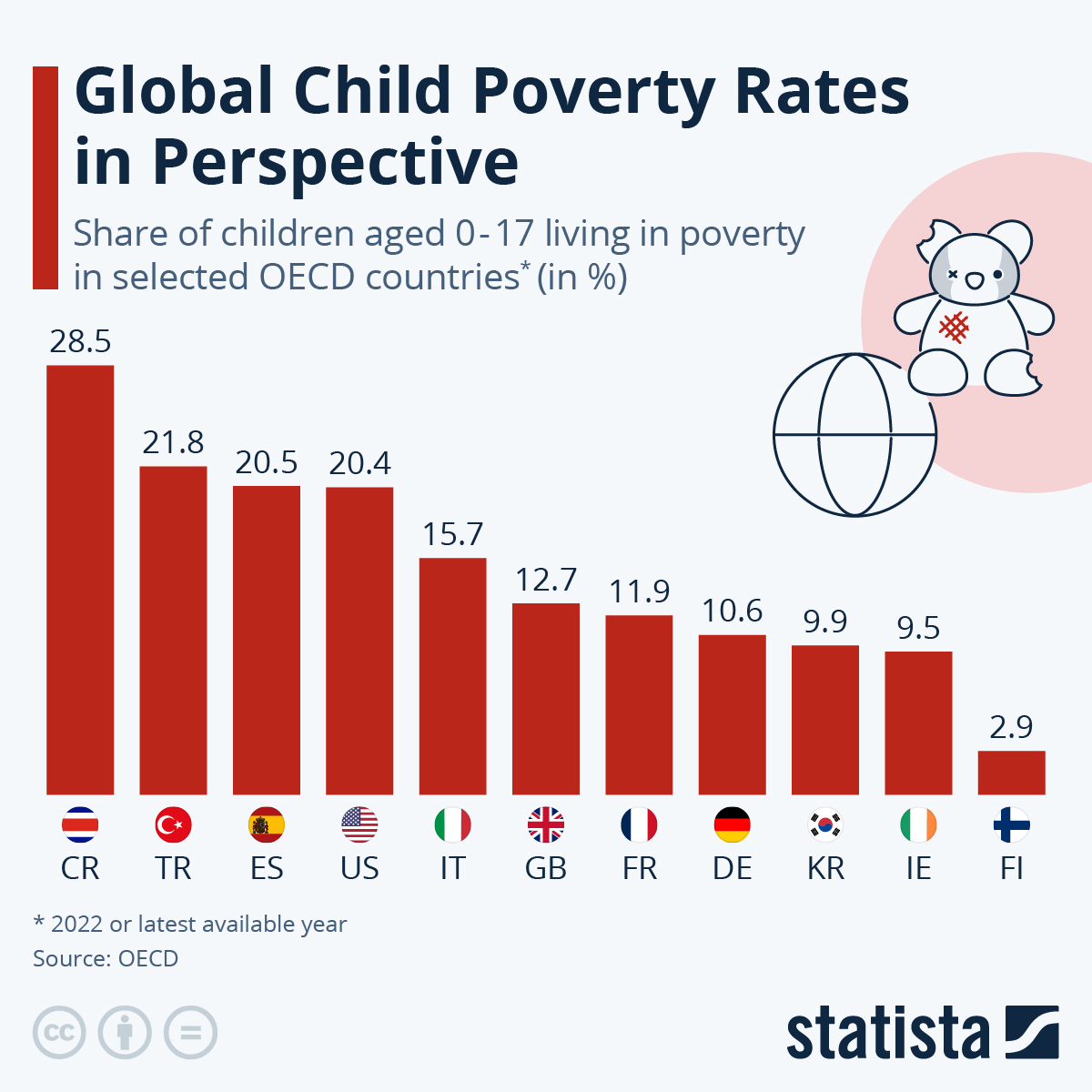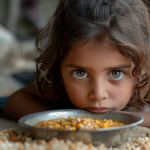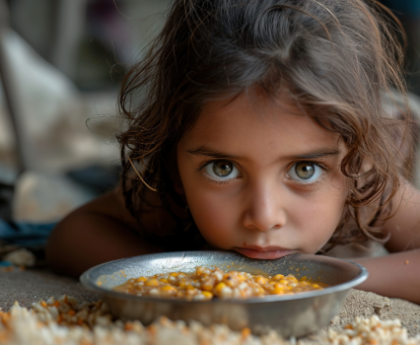It’s the 10th Red Nose Day in the United States today, a campaign led by the Comic Relief charity, with the main purpose of raising money for children in need.
Even beyond the impacts from a physical and mental health perspective, children living in poverty are also at a higher risk of food insecurity, which can impact development and a child’s ability to engage in education, which in turn has the potential to affect future earnings as an adult, further fuelling the cycle. As if that was not enough, child poverty does a disservice to society as a whole too, even from an economic point of view, as detailed in a 2018 study by Michael McLaughlin and Mark R. Rank of Washington University in St. Louis, which found that it has quantifiable costs from “lower economic productivity to higher healthcare costs, as well as costs associated with crime, homelessness, and child maltreatment”.
Child poverty is widespread, as this chart based on OECD data shows. Costa Rica had the highest rates of child poverty in 2022 out of the surveyed 38 OECD countries. In the Central American nation, over a quarter of children were living in poverty at the time of the study. This is measured as the proportion of children aged 0-17 living in households whose income falls below the poverty line; taken as half the median household income of the total population.
More than one in five children aged 0-17 were living in poverty in the United States, according to this data, placing it as one of the countries to stand well above the 38-country average of 12.6 percent.

Description
This chart shows the percentage of children living in poverty in selected OECD countries.
FAQ
This post was originally published on 3rd party site mentioned in the title of this page




